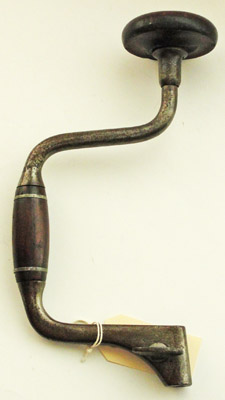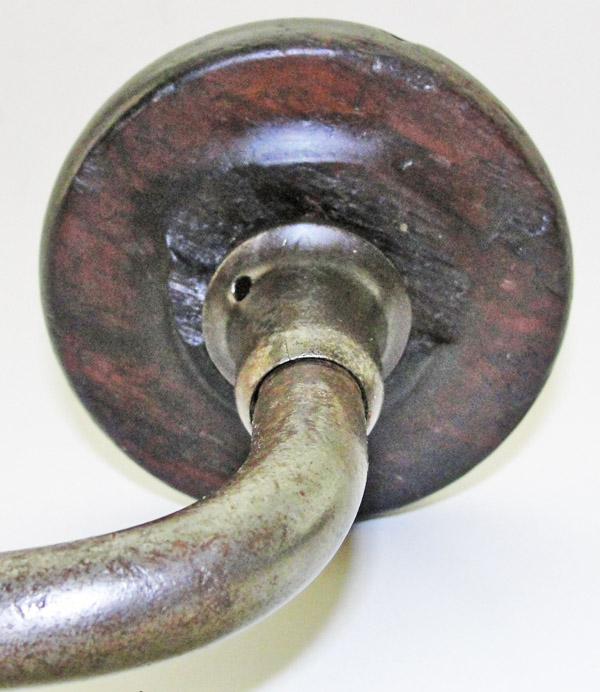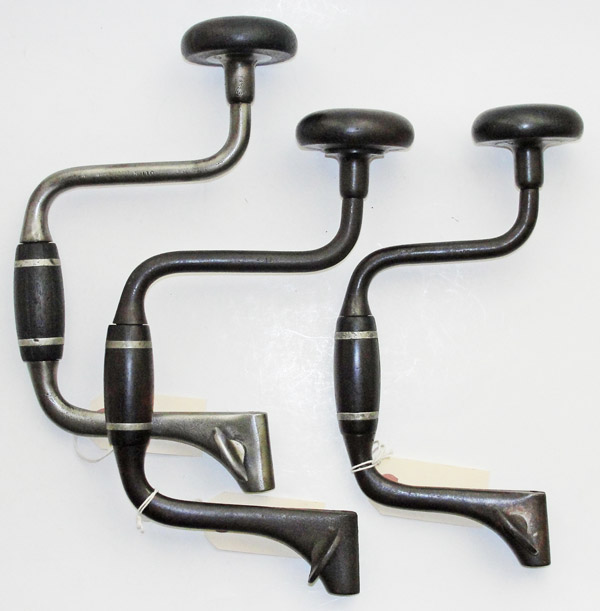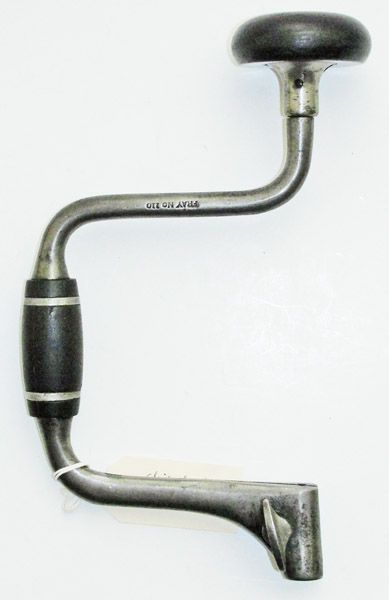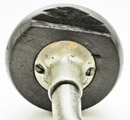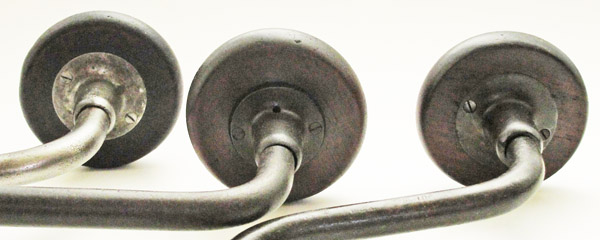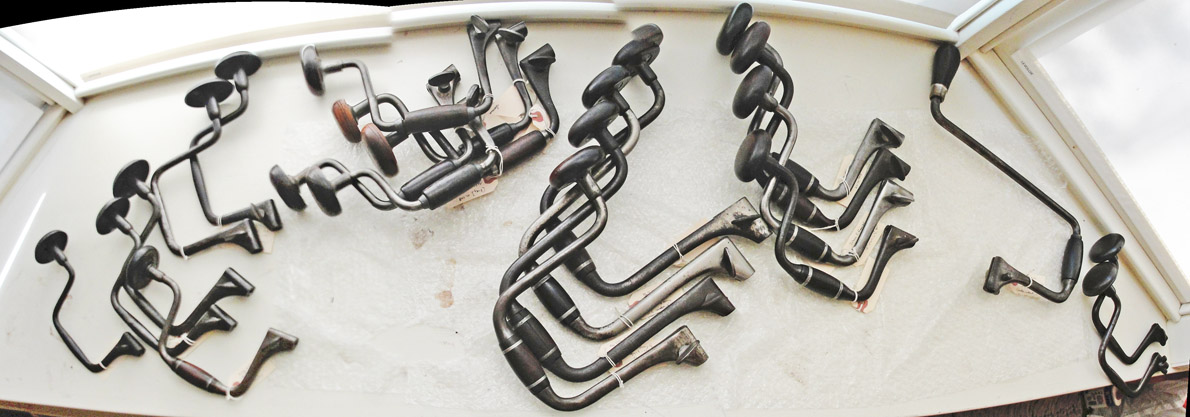
These three of the earliest
Spofford braces were made according to U.S. Patent No. 25,984,
issued
to Nelson Spofford on November 1, 1859 as shown below, left.
The ten inch (Brace A) and eight inch (Brace B) below are priced at
$75.00 plus
shipping;
and the smallest (Brace C) has been SOLD.
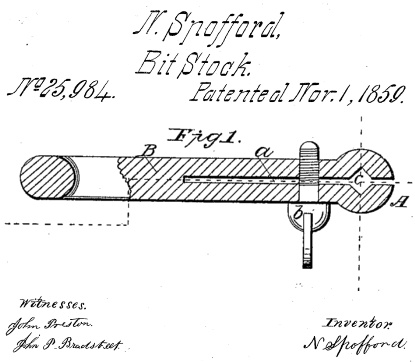 |
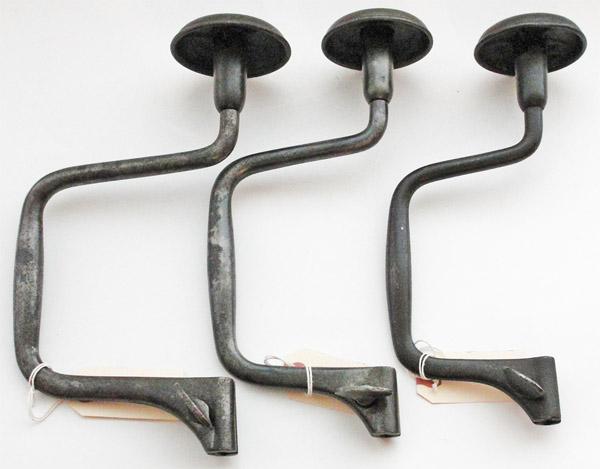
These three were made by Fray & Pigg, Bridgeport, Connecticut. The
10 inch and 8 inch sizes are marked with the Nov. 1, 1859 patent
date. The smallest brace simply states, "Spofford's Patent."
|
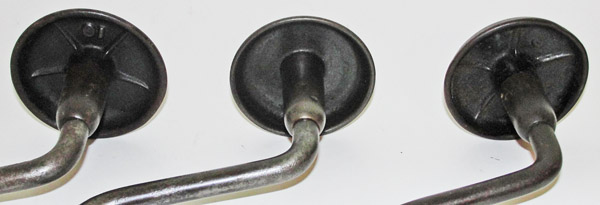
The ten inch brace has the swing cast into the underside of its pad;
the eight inch one has no number, and the six inch swing brace has a
faint "6" cast into the pad.
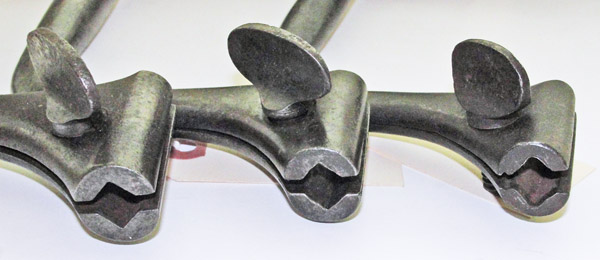
The smallest brace has notches for small drill bits; I have never seen
another Spofford brace like this one.
|
The next of Spofford's
improvements was a method of coring the mold for the frame so as to
eliminate the necessity of splitting the malleable iron chuck casting
with a saw, as indicated below, left, for US Patent 225,768, issued
March 23, 1880. The ten inch (Brace E) is $80.00; the eight inch (Brace
D) is
$70.00, both plus shipping.
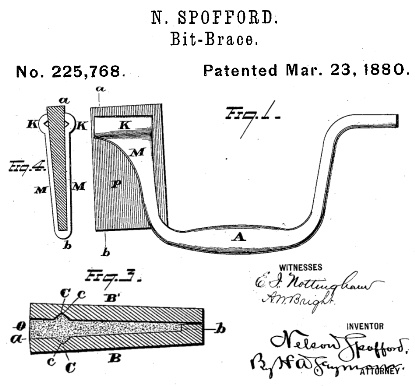 |
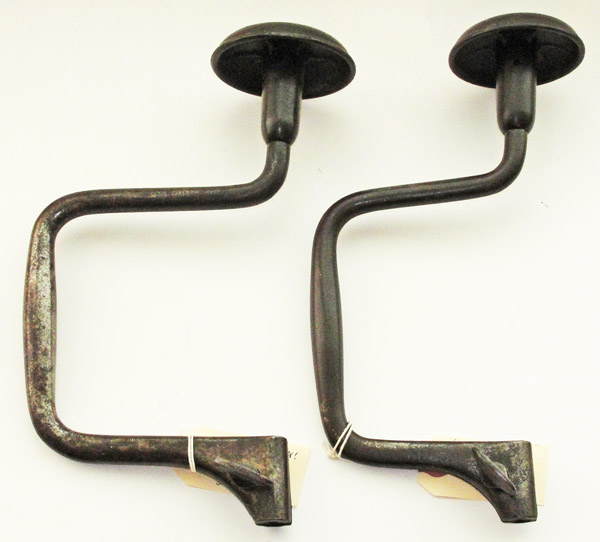
The larger 10 inch swing brace at left has bold markings; the smaller
brace's markings are faint but indicate the date OK.
|
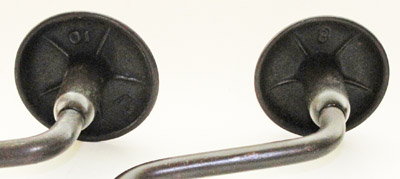
The swings are 10 inch and 8 inch, respectively.

John S. Fray signature on 10" swing brace.

March 23, 1880 patent date on the larger brace.
|
The five braces below were all made after the expiration of the
November 1, 1859 patent and before the adoption of the March 23, 1880
or February 15, 1881 patents, as they were made before these later
improvements were applied.
They are priced as follows: Brace G (12 inch size): SOLD; Brace H
(10
inch size): SOLD;
Brace I (8 inch size): SOLD; Brace J (10 inch
size) SOLD;
and Brace K (8 inch size): SOLD.
Braces G, I and J have slightly checked pads and/or wrist handles.
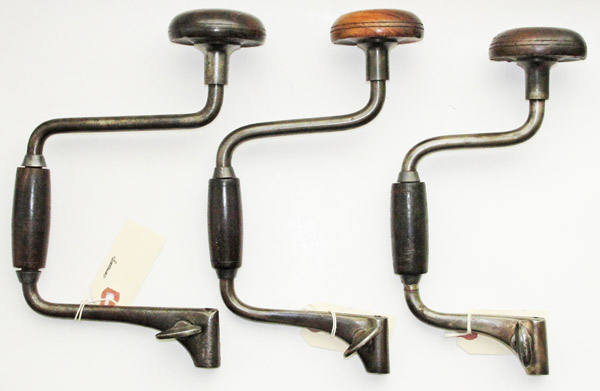
|
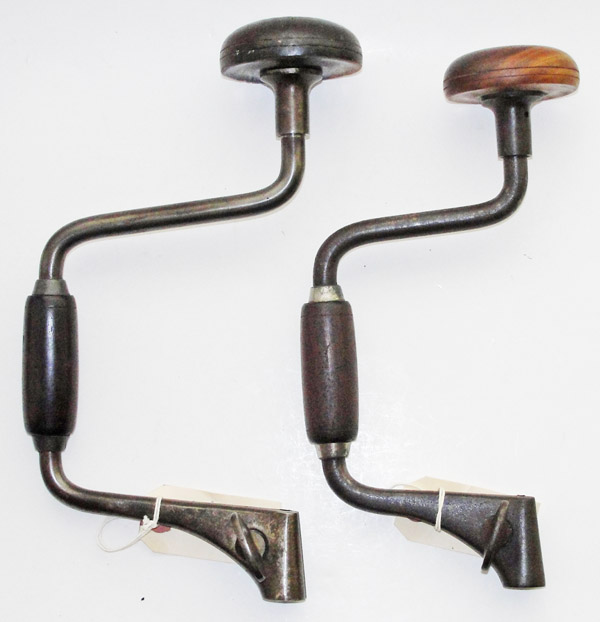
|
These five braces
all have no
maker's markings, but they have the characteristics of Fray braces,
including the slightly cupped lignum vitae pads and rosewood wrist
handles.
As well as their wavy chuck splits, these braces have another sign that
they were made from malleable iron chucks forge welded onto steel wire
frames: There is a "color" change in the patina at the interface
between the two metals ... impossible to photograph.
|
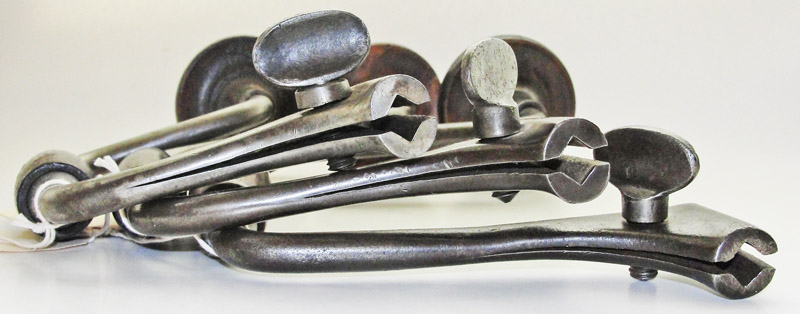
|
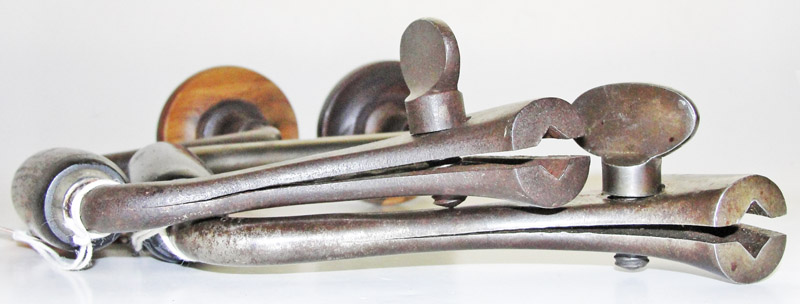
|
They
all have wavy splits in the chucks as shown at left. You can look more
closely by viewing the images separately in a new browser window.
The eight-inch swing brace at far left has a replaced thumbscrew; it
works OK.
|
The following cored-frame Spofford braces from the left:
Brace L (10 inch): SOLD; Brace M (10
inch): SOLD;
Brace N (8 inch): SOLD;
and Brace O (10 inch): SOLD. See
also Brace DD by John S. Fray & Co., Bridgeport, Conn., U.S.A.
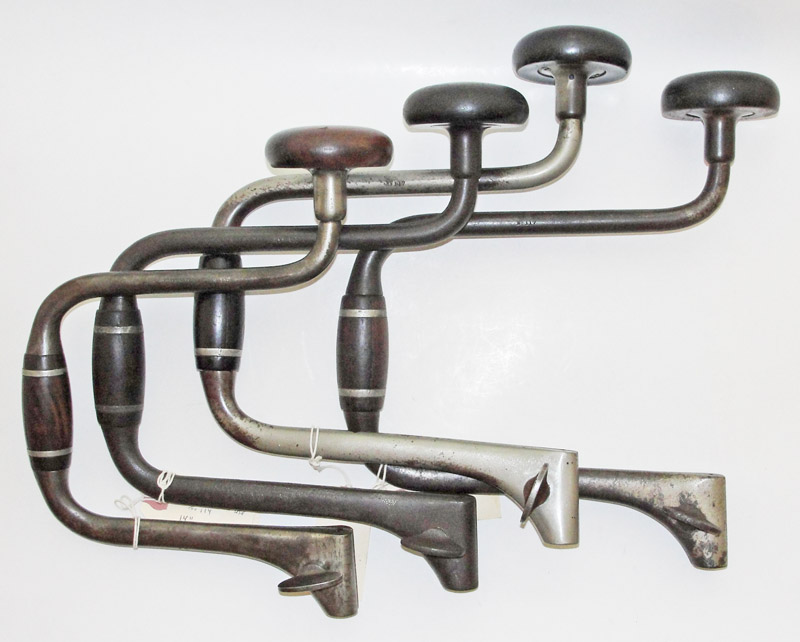
|


Brace S has strong markings & the size designation, "N-114".
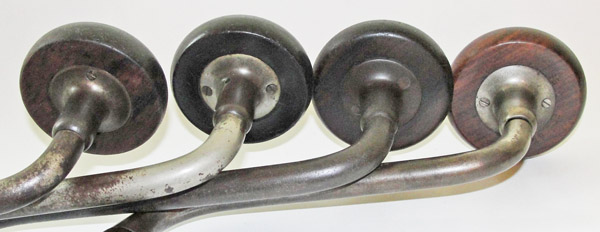
Braces Q, R, P & S; the undersides of the pads of braces R & S
have cupped shapes. Brace S's is stamped, "J.E. Rhodes."
|
The "big boys" at left have
these price tags (from left to right): Brace
S (14 inch) SOLD; Brace P
(17 inch): SOLD; Brace R
(17 inch): SOLD; and Brace Q (17 inch): SOLD.
Brace S has lost all but 5% of its nickel plating but has the smoothest
patinated surface. Brace R retains about 75% of its nickel plating (No
"Bridgeport" stamp, but a "No.117" size mark). Brace P has a rough
patina but good stamp markings ("No.117"). Brace Q has weak
manufacturer's markings (a strong "N-117") but retains about 5% of its
nickel plating.
|
The Whimble Brace T below (Price: $65.00) was made to the dictates of
U.S. Patent No. 237,780, granted to Nelson Spofford on February 15,
1881. It has a twelve inch swing.
 |
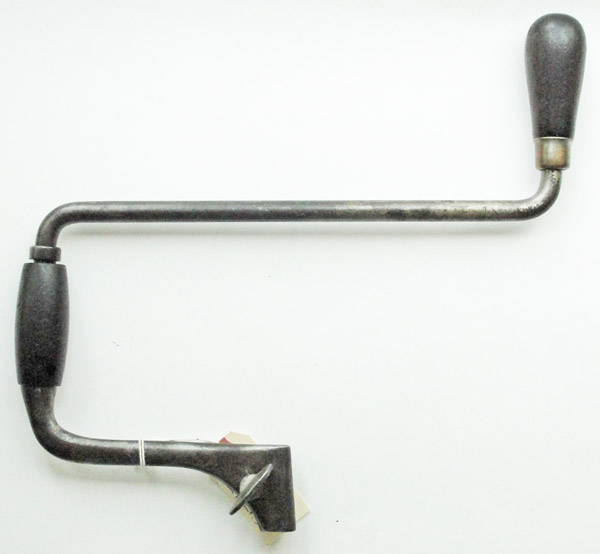
|
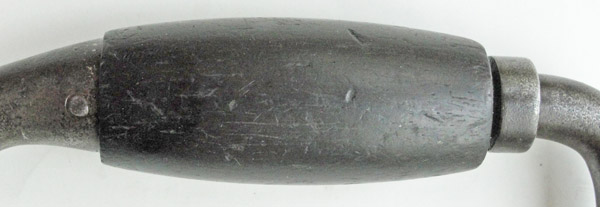
The patent is worded so as
to
permit any one of several connection mechanisms; in this one the wire
portion of the frame was pinned to the malleable iron chuck casting. Brace
B&D-40's connection is also pinned, but the malleable iron
chuck isn't bent at the connection like the one above.
This brace also has metallurgical interest; the hole for the
thumbscrew is cracked, but shows considerable toughness.
See the
following two images: Image 1 ... Image 2.
|
There
are two more Spofford braces of less certain parentage. Brace U (8 inch
and Price $30.00) is at left; Brace V (also 8 inch and Price $30.00) is
at right.
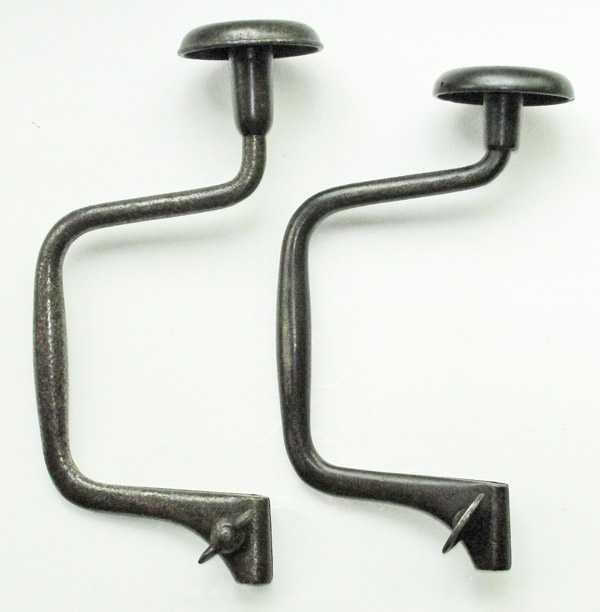
|
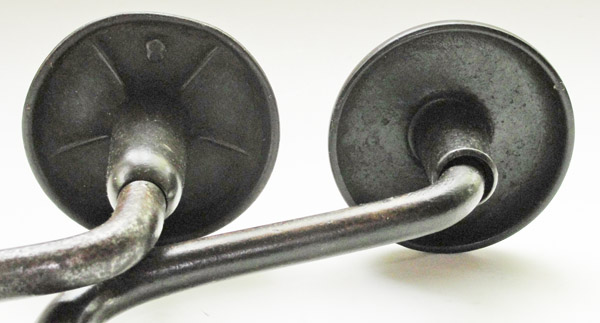
Brace U (at left) has its 8 inch swing size cast into the pad; Brace V
has no size or manufacturer's markings, and its pad has been remounted
onto a shortened or formerly worn out frame which now works OK.
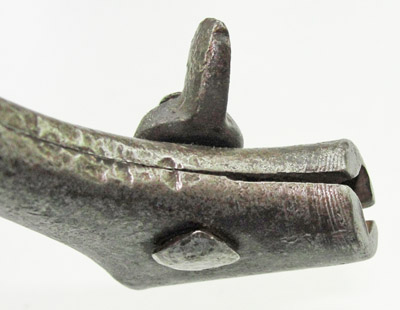
Brace U's thumbscrew has been replaced with a nicely fitted bolt
and thumbnut.
|
Brace
U was made according to the original Spofford patent, but after its
expiration (i.e., later than 1866) and carries a faint John S.
Fraymanufacturer's mark, but it has had its thumbscrew replaced with a
bolt and wingnut.
Brace V either had its pad worn out from long or unlubricated use, or
it had to be shortened. I favor the "shortened" hypothesis because its
pad also has two small holes drilled into the rim and a drilled center
hole, which were probably used to hold the brace in a blacksmith's
stationary boring device.
There are unmarked grey cast iron braces dedicated for such use on the
market which have the added advantage of much greater weight so as to
smooth out the drilling process.
Brace V's pad was thus remounted a very long time ago, as the fastening
mechanism is no longer visible.
|
Here's the 14
inch Brace W, a latecomer to the family; SOLD
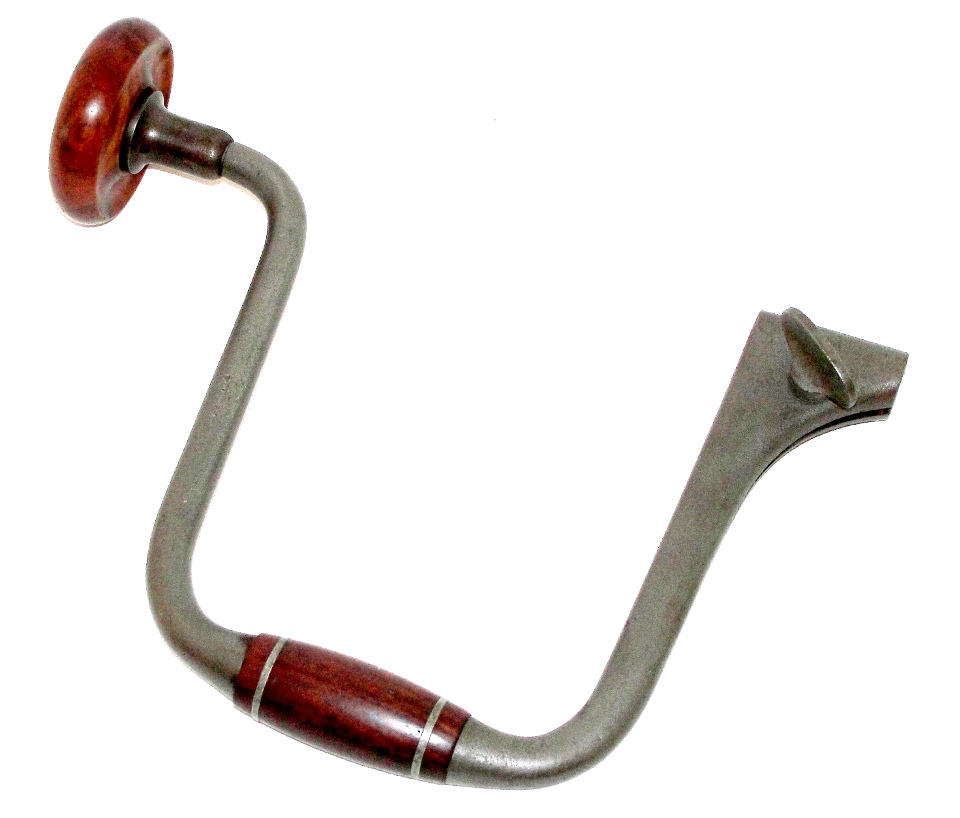
|
This
brace long ago suffered a bout of cleaning with some rather benign
abrasive, not sandblasting, because the iron surface is rather smooth.
The wood was quite well protected from that process and shows no ill
effects. Just visible in the plan view at far left is a little spot of
dark oxide (remnant magnetite) that the cleaning process missed. The
brace is fully functional. The close-up view at far right shows the lip
at the opening of the chuck jaws that is meant to retain the bit while
withdrawing it from the hole being drilled. This brace has never been
used with a round-shank bit. The swing is fourteen inches.
|
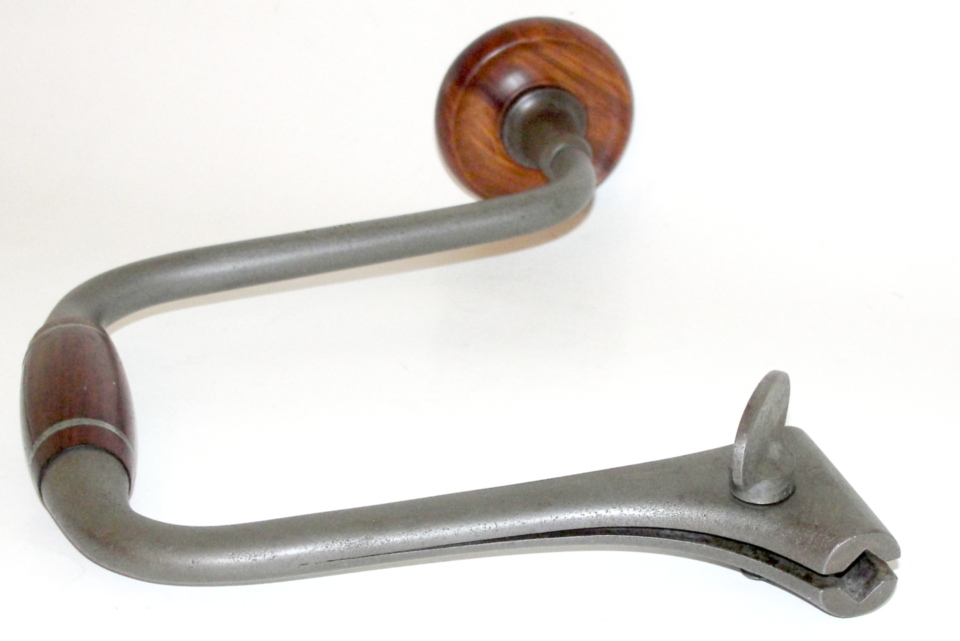
|
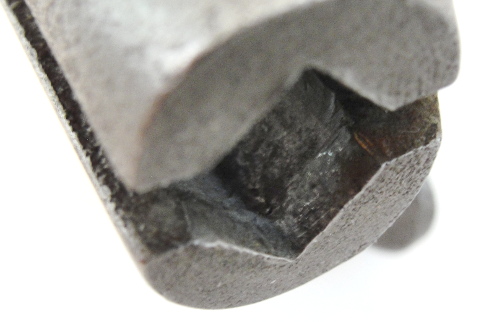
|
|

|

|
The
cleaning at least left the maker's marks clearly legible. Some
additional images can be seen here: Wrist; Pad.
|
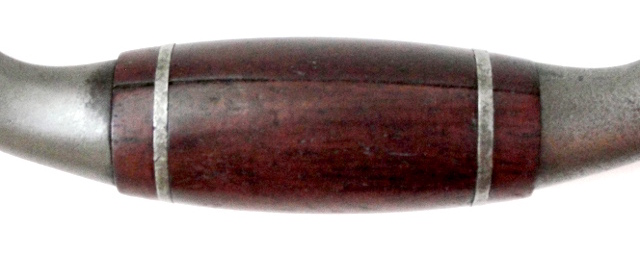 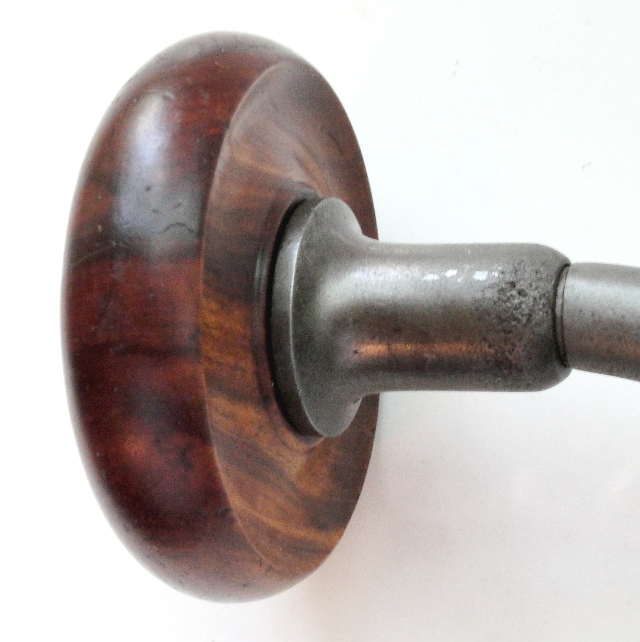
|
Five More Spofford Braces
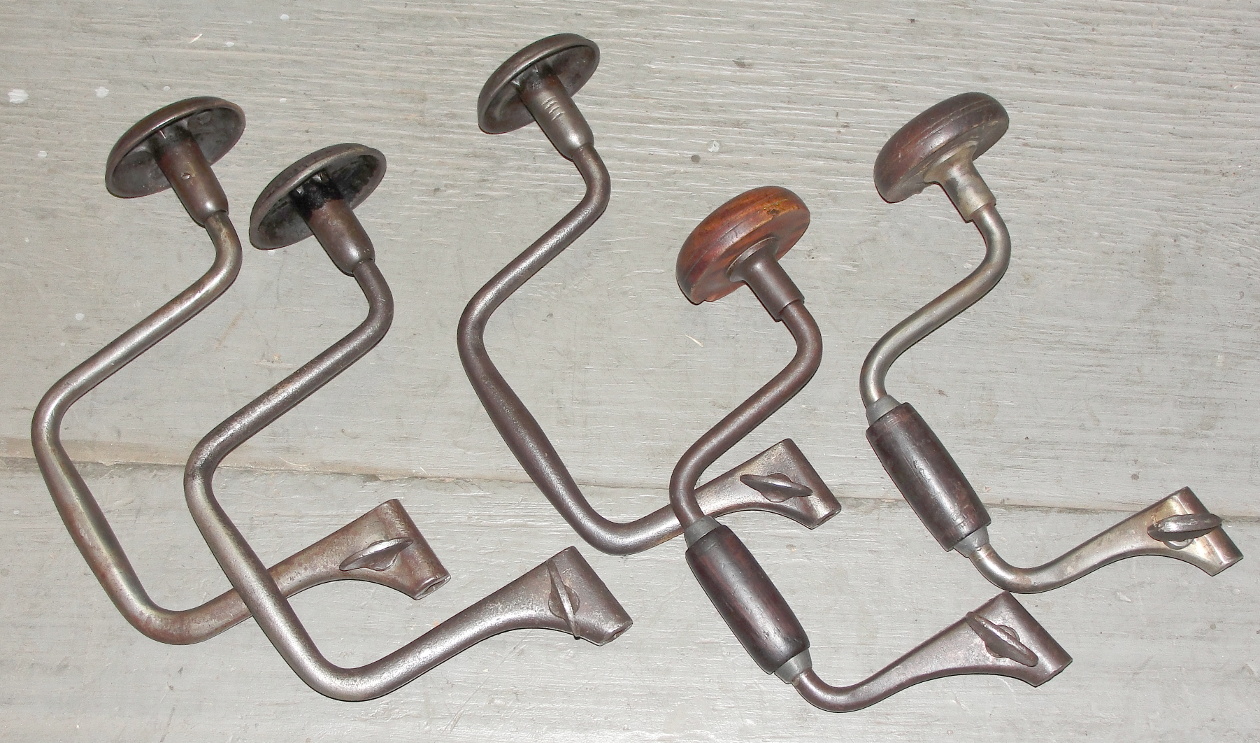
|
From left to
right:
Brace X: 10 inch swing Fray & Pigg/Spofford Patent, Bridgeport, CT,
smooth frame: SOLD
Brace Y: 10 inch swing John S. Fray & Co. illegible patent date,
pitted frame: $30.00
Brace Z: 8 inch swing Fray & Pigg, Bridgeport, CT, pitted frame:
$35.00
Brace AA: 108, otherwise unmarked, lignum pad, rosewood wrist, smooth
frame, replaced thumbscrew: SOLD
Brace BB: 108, otherwise unmarked, lignum pad, rosewood wrist, smooth
frame, repaired thumbscrew: SOLD
|
Brace
DD, shown below, was made by John S. Fray & Co., Bridgeport, Conn.,
U.S.A. with a malleable iron frame and rosewood wrist handle in two
halves, secured with cast-in-place pewter rings. Except from some
toolbox dings on the wrist handle, it is in otherwise perfect
condition, with a black magnetite patina replacing the long-lost nickel
plating. It's the "108" size (eight inch swing). Price: SOLD.
Note: Brace-EE has been SOLD; Brace-FF is also SOLD - descriptions pending.
|








